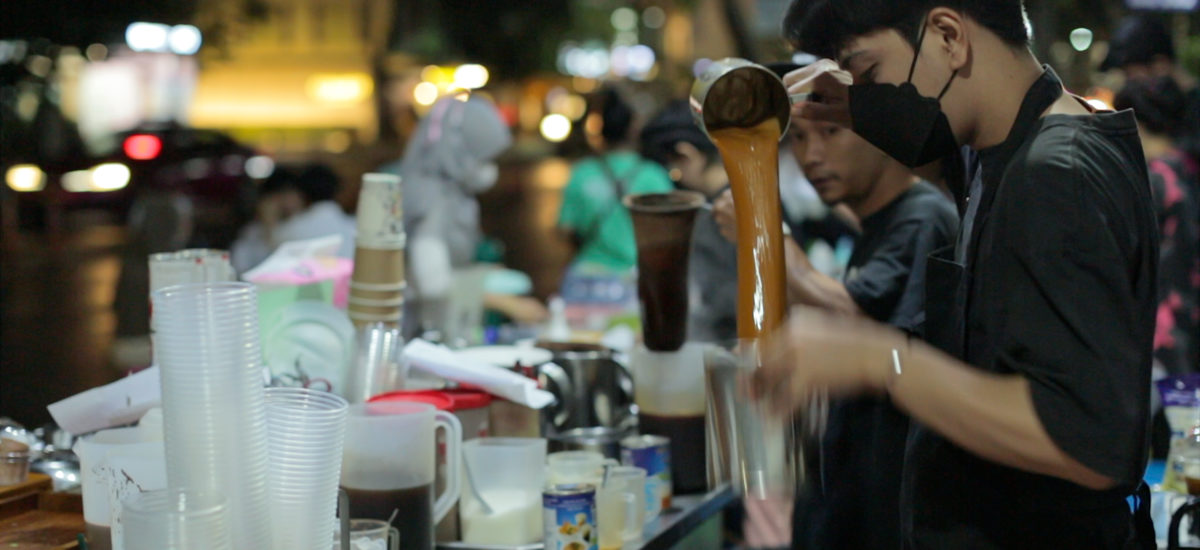Photo courtesy Sujeewa De Silva
In a world where narratives of conflict and division dominate, the International Centre for Ethnic Studies (ICES) offers a refreshing perspective through its latest project, Shared Encounters. This semi-academic book, along with three accompanying documentaries, seeks to challenge the prevailing discourse by highlighting stories of coexistence and ethnic confluence from Sri Lanka, Myanmar and Thailand. These works collectively present an alternative narrative that underscores the importance of honouring the diversity of groups, cultures and beliefs in these countries.
Shared Encounters is the outcome of a collaborative effort by writers, academics and filmmakers from Sri Lanka, Myanmar and Thailand. It aims to counter dangerous and hate speech by amplifying positive narratives of coexistence, religious and cultural confluence and intergroup solidarity. It was also a modest first step towards understanding ourselves in a regional context.
Sri Lanka, Myanmar, and Thailand share many similarities despite their unique circumstances. All three have a Theravada Buddhist majority, a rich tapestry of ethno-religious communities and a history of political struggles. Each country has faced challenges in accommodating its diverse populations, leading to periods of conflict and tension. Yet, as Shared Encounters reveals, there are numerous instances where diversity has been a source of strength and unity.
The conditions in these countries highlight both commonalities and distinct paths. Sri Lanka, emerging from decades of ethnic conflict, now grapples with economic challenges and political corruption. Myanmar’s journey from military rule to brief democratic governance and back to a military coup has been tumultuous. Thailand’s economic growth contrasts with its ongoing ethno-religious conflict in the Deep South and restrictions on free speech. Despite these challenges, Shared Encounters showcases stories that offer hope and inspiration.
Sri Lanka: The Silenced Era
The Silenced Era: Lesser-known Stories from the Early Days of Sri Lankan Cinema by Hasini Haputhanthri reflects on the golden era of Sri Lankan cinema in the 1960s and 70s, marked by inclusivity and collaboration. This period saw significant contributions from various ethnic communities. However, the 1956 Sinhala Only Act marginalised the Tamil speaking community, sowing seeds of ethnic discord. These tensions culminated in the Black July riots of 1983 during which the Rio Cinema owned by the Navaratnam family was torched. The article traces the multicultural foundations of Sri Lankan cinema back to pioneers such as T.A.J. Noorbhai, emphasising the impact of diverse ethnic contributions, as well as the erosion of that diversity with the rise of nationalism. By celebrating the diversity and collaborative spirit of early Sri Lankan cinema, the article calls for a proactive choice for coexistence and understanding.
Thailand: Roots and Routes to Freedom
Roots and Routes to Freedom from the Deep South to Phetchaburi Street by Chakravadhana Bodhimani and Suniti Chuthamas chronicles the life of Bae Mah, a 62-year-old Malay Muslim from Pattani in Southern Thailand and his journey from Pattani to Bangkok. Through his story the article explores themes of migration, community, multiculturalism and the social dynamics in Bangkok’s Phetchaburi Street. Bae Mah arrived in Bangkok 40 years ago to study at Ramkhamhaeng University but ventured into the business world, starting with fabric trade and eventually running a barbershop. This barbershop became a haven for young Muslim emigrants and diverse customers, fostering a sense of community in the urban setting. Inspired by the tea culture of his native Pattani, Bae Mah later opened a tea and roti stall, creating a multicultural gathering space. This stall became a symbol of inclusion, welcoming everyone from local residents to tourists and fostering social cohesion in the neighbourhood. The article highlights the importance of such spaces in promoting social harmony and countering the alienation often seen in big cities.
Myanmar: The Vanishing City
The Vanishing City by Nyan explores Sittwe, the capital of Rakhine State, Myanmar, shedding light on its rich, diverse history through personal narratives and oral histories. This approach provides a nuanced understanding of Sittwe’s cultural and social landscape, particularly against the backdrop of recent violence and persecution. The article highlights moments of shared understanding and cultural celebration amid the challenges faced by Sittwe’s inhabitants. Sittwe’s history as a cosmopolitan hub during the Mrauk-U era, its diverse population under British colonial rule and the communal harmony of its central market are contrasted with the current state of division and conflict. The article emphasises the importance of recognising diverse narratives and shared cultural practices, offering hope for a future where such diversity can be celebrated once again.
The Role of Positive Narratives
In today’s world where online and offline communities are often polarised by hate speech and conflict, the significance of positive stories cannot be overstated. Shared Encounters is not merely a collection of nostalgic feel good tales. It provides profound insights into how communities can bridge divides and resolve conflicts amicably. The project underscores the need for a collective attitudinal shift towards peaceful conflict resolution.
The book Shared Encounters in Myanmar, Sri Lanka and Thailand, along with a facilitator’s guide for those who wish to use the book to spark dialogue on issues related to peace and diversity in a community setting, can be found on the ICES website. The three documentaries, which bring the stories to life visually and provide deeper insights into the cultural contexts of Sri Lanka, Myanmar, and Thailand, are available on the ICES YouTube channel.

